The Italian real estate market has demonstrated remarkable resilience in early 2025, with investment volumes reaching €2.7 billion in the first quarter, according to analysis from Dils’ Team Research. This represents a 44% increase compared to the same period last year, supporting cautiously optimistic forecasts for the remainder of 2025. Over the past 12 months, Italy has attracted €10.8 billion in real estate investments, marking a 45% increase from the previous 12-month period.
Hospitality Leads the Charge
The hospitality sector emerged as the standout performer, attracting approximately €660 million in investments—nearly triple the figure from Q1 2024. Activity was particularly robust in premier tourist destinations including Rome, Capri, and Milan, with investors showing strong preference for luxury properties. The sector’s strength was underscored by high-value transactions, with three of the four largest single-asset hospitality deals from the past year occurring in this quarter alone.
Logistics Continues Strong Momentum
The logistics sector maintained its upward trajectory, drawing €640 million in the first quarter—double the volume seen in Q1 2024 and 22% higher than the previous quarter. Two major portfolio sales, each exceeding €200 million, solidified logistics as the second-best performing asset class for the quarter. The prime net yield for logistics properties continues its gradual decline, now standing at 5.30%.
Take-up of logistics space reached approximately 485,000 square meters, representing a 13% decrease compared to Q1 2024, partly due to smaller average deal sizes of around 20,200 square meters. Despite this moderate decline, the market appears to be stabilizing after years of exceptional growth, with expectations of equilibrium around 2 million square meters annually. Prime rents across Italy’s main logistics markets held steady, with the national prime rent remaining at €70 per square meter per year in both Milan and Rome.
Office Market: Milan Dominates
The office sector recorded €500 million in transactions during Q1, comparable to the same period last year, with Milan accounting for 86% of invested capital. Domestic investors showed particularly strong confidence in their home market, providing 92% of total office investment capital.
Milan’s office market registered take-up of approximately 105,000 square meters, an 11% increase year-on-year and above the five-year average for first quarters. Limited availability of Grade A/A+ spaces restricted large-scale transactions, with only one deal exceeding 10,000 square meters completed during the quarter. The market was primarily driven by mid-sized spaces between 1,000-5,000 square meters, which represented about 40% of transactions, while high-quality spaces continued to dominate, accounting for over 75% of the market. Following last year’s growth, prime rent in Milan stabilized at €775 per square meter per year, though further increases are anticipated in coming quarters.
Rome’s office market recorded approximately 34,000 square meters of take-up, in line with Q1 2024 results. Of the 36 transactions recorded, only six involved Grade A/A+ properties, highlighting the persistent shortage of high-quality assets in sought-after submarkets. This scarcity has delayed some deals and created a new pipeline, while supporting an upward outlook for prime rent in the CBD, which reached a new peak of €610 per square meter per year.
Retail and Living Sectors Show Promise
Building on strong 2024 performance, the retail sector recorded approximately €500 million in Q1 investments, marking its strongest start to a year in five years. Key contributors included the sale of two luxury outlets between Florence and Sanremo totaling over €300 million, alongside significant high street transactions in Milan and Florence.
The living sector performed robustly, with approximately €180 million invested—a 27% increase from Q1 2024 and 11% above the quarterly average of the past two years. Despite urban planning challenges in Milan, investments in residential property redevelopment and repositioning remained significant. The quarter’s most notable transaction was the sale of a modern purpose-built student accommodation facility in Bologna, reflecting the student housing segment’s continued momentum.
Residential Market Analysis
The Italian residential sales market closed 2024 positively, with Q4 2024 showing further improvement through over 217,200 normalized transaction numbers—a 7.2% increase compared to Q4 2023. Overall, national transactions in 2024 reached 719,578, showing slight growth over 2023.
Milan experienced a significant shift in Q4 2024, recording 7,692 transactions—a historical record for the fourth quarter and 9.5% higher than Q4 2023. Despite this strong finish, the full-year tally of 23,987 transactions represented a 3.5% decrease from 2023. Smaller units under 85 square meters remain most popular, accounting for nearly 65% of sales despite a slight decline. Sales of newly built homes doubled compared to the previous quarter, representing 22.9% of the total—almost twice the national average.
Rome’s residential market continued its growth trajectory, rising 9.6% from Q4 2023 and finishing 2024 with 35,072 transactions, a 2% increase year-on-year. Medium-to-large units over 85 square meters constituted 49% of total volume, while smaller units saw a slight decrease compared to the previous year’s fourth quarter. Newly built homes increased their market share to 13.4%, up from 7.9% in the previous quarter.
From a financing perspective, the proportion of mortgage-supported purchases decreased in Q4, dropping to 48% in Milan (down 3%) and 53.5% in Rome (down 6%).
The national rental market remained stable in contract numbers, but Rome and Milan displayed divergent trends. Rome experienced a decline in long-term contracts (down 6.0%) alongside increasing annual rent values (up 3.2%), while Milan saw decreases in both contract volume and rent values (down 4.6% and 3.6%, respectively). For short-term rentals, Rome saw decreasing volume despite higher cumulative rents (down 9.1% in contracts, up 1.1% in rent), while Milan experienced growing demand (up 6.1% in contracts and 9.9% in cumulative rent).
Future Outlook
The alternative sector attracted lower investment volumes compared to recent quarters, though segments including education, healthcare, and particularly data centers are expected to play increasingly significant roles in the market, driven by their alignment with long-term macro-trends.
Mixed-use assets drew approximately €170 million in investments, primarily through two medium-sized transactions in Milan and Bergamo—the former combining office, residential, and commercial use, and the latter blending office and industrial space.
The first quarter results confirm the investment growth trend that characterized 2024, with strong interest in established asset classes, particularly logistics and hospitality. Investors are increasingly exploring diversification opportunities in innovative market segments, with data centers leading this expansion. As Italy navigates profound societal changes and shifting international dynamics, the challenge for its real estate sector will be leveraging its position within the European landscape by capturing medium and long-term macro-trends to continue offering investment opportunities aligned with major institutional and private investors’ objectives.
Richard Tayar is the founder of Columbus International, an international real estate firm bridging markets between the United States and Italy, with focus on New York, Milan, Florence, and Miami.



